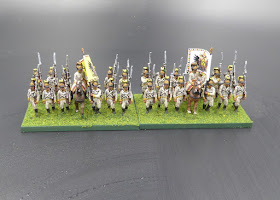With a light dusting of snow falling on my fair city this Sunday morning, thoughts turn to travels during warmer times.
One stop during our 2014 trip to Italy is the focus for today's pictorial. During that trip we made a generally south to north journey following a route of Rome-Florence-Lucca-Pisa-Vernazza-Milan.When traveling, for two weeks, we try to fit in a rest stop at some point during the journey to relax a bit, do some laundry, and enjoy the culture for a few days. On the 2014 Italian trip, Vernazza on the Cinque Terre was to be that resting place.
To reach Vernazza from Pisa, a change of train was required in La Spezia. With the five towns on the Cinque Terre packed into the rocky cliffs close together, a passenger must remain alert in order to get off the train at the appropriate stop.

Managing to detrain at the Vernazza stop, we grabbed our bags and climbed down from the elevated train station and headed out into the center of town in search for our accommodations.
Wanting a view of the harbor including Doria Castle, we booked a small room high up on the hillside overlooking the town, harbor, and tower. Although the host stated that it was a ten minute walk up to the apartment, the number of stairs and steepness of the climb was a surprise especially carrying luggage.
Where was our room? Perched high upon the cliff overlooking the town and harbor. It was a long hike up the side of the hillside to a spectacular view looking down upon the magnificent, pocket harbor. Our residence for the next three days is pinpointed by the arrow in the photo below.
If the climb up to the rook had not taken our breath away, the view from our abode certainly would have. Below is the view from our room. Spectacular!
The small beach seen in the photo above was not accessible before the torrential rains and flooding in 2011. Under the main street runs a stream that flooded during the 2011 storm cutting a new access point to the secluded beach.Now, the beach is a popular attraction and provides the residents of Vernazza something not accessible before; a beach!
Still, the main attraction of Vernazza remains its inner harbor. Certainly one of the most photographed spots on the Italian Riviera.
To maintain a military history tie, at the upper end of Vernazza stands a plaque commemorating the village soldiers lost in both World Wars. In the WWII section of the plaque, some fallen soldiers are denoted as "Part." These fighters were partisans who lost their lives fighting against Mussolini in the hills surrounding the Cinque Terre.
Given the long and challenging hike from our room to the town center far below, we often took a meal on our terrace overlooking the harbor and Doria Castle.
On more than one occasion, I left my wife on the terrace and descended down the trail in search of foodstuffs in the town center. We found a variety of edibles including good seafood, a great farinata and the best gelato of our entire trip. Of course, we visited the gelateria daily!Vernazza is definitely worth a stop when traveling through the Cinque Terre.

















































